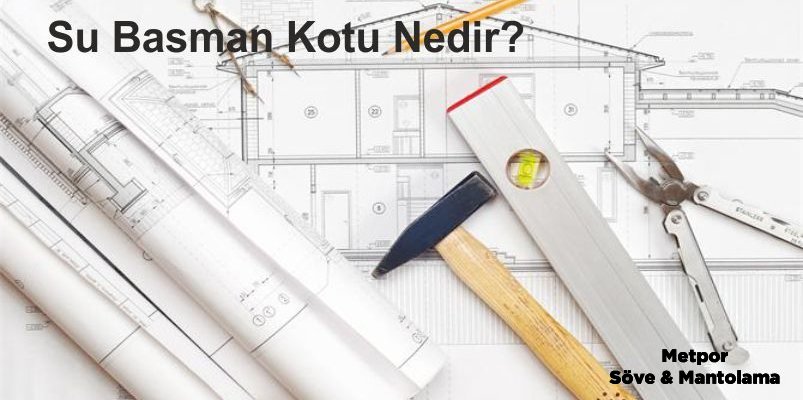I Have Thermal Insulation, How Long Will My Insulation Pay?
How Long Does Your Insulation Pay Off?
The householder, who pays 2420 TL in a non- heat-insulated building, can withdraw his natural gas bill by half after having the exterior cladding done.
While the energy we spend as a country and the budgets we allocate to heat the buildings are so large, the bills paid by the building residents, especially in the winter months, are also higher compared to their income.
Increases in energy prices, and especially natural gas, raise the bills of the households, who cannot compromise on comfort due to their children, patients and the elderly, on the one hand, and cause the households who do not want their bills to increase further, on the other hand, cause concessions from comfort by heating their house less thanks to insulation .
Thermal insulationapplication has a cost to households, but this cost is amortized in a few years, although it varies from region to region. The return of this cost to the household is realized as both a reduction in bills by half and an increase in comfort.
The easiest, most effective and technically correct way to reduce the heating cost of the houses is the exterior cladding methods , also called “ sheathing ”.
Due to the course of international energy prices, the increase in fuel prices, especially natural gas, is another reason for isolation . Because one issue on which energy experts now agree is that the prices of fossil fuels such as natural gas and oil will never decrease to pre-crisis prices.
For this reason, sheathing is a very logical decision considering today's energy prices, but it is a very, very logical decision considering future energy prices.
The fact that the CPI increased by 18.7% in the last two years and the price of natural gas in residences increased by 47% is a clear indication that having exterior cladding is a logical decision for today and an investment in the future.
The owner of the house, who pays 2420 TL in the building without thermal insulation, halves the bill with insulation!
In 2013, an average of 1282 TL will be paid in Turkey for heating in an apartment with a gross usage area of 150 m2, heated by natural gas and without thermal insulation.
In the same flat, approximately 870 TL was paid in 2011 (with natural gas prices in January 2011) for heating. The increase in natural gas prices by approximately 47% in Turkey between January 2011 and January 2013 has increased the heating cost per flat by 412 TL per year. While the share of inflation in this 412 TL increase was 163 TL, the remaining 249 TL increase is the increase in the heating expenses paid per flat due to the increase in natural gas prices over inflation. If this building is insulated with a material sheathing system
of 6 cm thick at 2013 prices and approximately 40 TL/m2 , the thermal insulation cost per flat will be approximately 4000 TL.
Assuming that natural gas prices will increase by 20% annually in the coming period, as in recent years, the average depreciation period of thermal insulation in Turkey will be approximately 3 years. If natural gas prices increase by 8% annually in proportion to inflation, the average depreciation period of Turkey will be 3.5 years.
If the same building had been insulated with the same thermal insulation system ( jamb cladding ) at 38 TL/m2 in 2011 prices, the cost per flat would have been approximately 3800 TL. Under these conditions, if natural gas prices had increased by 8% per annum in line with inflation in the 2011-2013 period, the depreciation period would have been approximately 5 years.
However, the increase in natural gas by 47% in this period will cause the depreciation period of thermal insulation, which was approximately 5 years in 2011, to be realized in a period of 3 to 3.5 years, as of today, according to the course of energy prices in the upcoming period. These figures show that especially due to the increase in natural gas prices, insulationtoday, compared to 2 years ago, the most important element of all these external insulation applications is the jacketing insulation board. Sheathing insulation boards have various thicknesses and densities. Although it is generally used in 4 cm thickness and 16 density density, there are also options with 3-8 cm-16-32 density densities that can be used optionally. With a specification published in 2000, the thickness of the sheathing insulation boards in all regions and provinces was determined.
In this specification, which has been prepared considering the climatic conditions in our country, the thickness and density required for our entire country are determined according to the wall structures of your building.
Although the selection of sheathing insulation board is optional, it must both comply with the specification and expert recommendations should be taken into account depending on the amount of pressure your building will lift.
Correct external insulation application cannot be made by choosing only thick jacketing insulation board. Since it is a process based on melting many technical variables in a crucible, the sheathing process has to be done by experienced and expert people, using advanced equipment. The most important phase of the sheathing application is the selection of the most suitable sheathing insulation board by calculating the climatic conditions and the pressure ratios that your building can withstand,the sheathing insulation board .







Metpor
info@metpordekor.com
Okunma Sayısı : 185